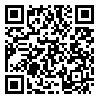Volume 24, Issue 3 (Autumn 2023)
jrehab 2023, 24(3): 382-397 |
Back to browse issues page
Download citation:
BibTeX | RIS | EndNote | Medlars | ProCite | Reference Manager | RefWorks
Send citation to:



BibTeX | RIS | EndNote | Medlars | ProCite | Reference Manager | RefWorks
Send citation to:
Taheri M, Talebi G, Taghipour M, Bahrami M, Gholinia H. Frequency of Adverse Neural Tension and Its Association With Functional Disability in Upper Extremity Musculoskeletal Pain Syndromes: A Cross-sectional Study. jrehab 2023; 24 (3) :382-397
URL: http://rehabilitationj.uswr.ac.ir/article-1-3263-en.html
URL: http://rehabilitationj.uswr.ac.ir/article-1-3263-en.html
1- Department of Physiotherapy, School of Rehabilitation, Babol University of Medical Sciences, Babol, Iran., Babol University of Medical Sciences
2- Mobility Impairment Research Center, Health Research Institute, Babol University of Medical Sciences, Babol, Iran. ,talebiali2@yahoo.co.in
3- Mobility Impairment Research Center, Health Research Institute, Babol University of Medical Sciences, Babol, Iran., Babol University of Medical Sciences
4- Department of Orthopedic, School of Medicine, Babol University of Medical Sciences, Babol, Iran., Babol University of Medical Sciences
5- Health Research Center, Babol University of Medical Sciences, Babol, Iran., Babol University of Medical Sciences
2- Mobility Impairment Research Center, Health Research Institute, Babol University of Medical Sciences, Babol, Iran. ,
3- Mobility Impairment Research Center, Health Research Institute, Babol University of Medical Sciences, Babol, Iran., Babol University of Medical Sciences
4- Department of Orthopedic, School of Medicine, Babol University of Medical Sciences, Babol, Iran., Babol University of Medical Sciences
5- Health Research Center, Babol University of Medical Sciences, Babol, Iran., Babol University of Medical Sciences
Abstract: (4911 Views)
Objective Musculoskeletal pain syndrome (MPS) is one of the main causes of functional disability. Although the symptoms and complaints of patients with MPS are often related to their musculoskeletal structures, repeated microtraumas and overuse (the main causes of musculoskeletal pain) may also lead to abnormal neurodynamics. Abnormal neurodynamics refers to mechanical dysfunction in the movement of nerve structures related to the surrounding tissues or disruption in the normal elongation of the nerve. Some recent studies have suggested the possibility of abnormal neurodynamics in patients with MPS. Therefore, this study aims to determine the frequency of abnormal neural tension and its association with functional disability in patients with MPS of the upper extremity.
Materials & Methods A hundred participants with MPS (78 women and 22 men) participated in this study. Median, radial and ulnar nerve neurodynamic tests were performed according to Butler & Shacklock’s approach. There was a five-minute rest between each test to avoid the therapeutic effects of neurodynamic maneuvering. To quantitatively measure the intensity of the abnormal tension in the peripheral nerves in case of a positive neurodynamic test, the angle of the elbow joint in extension (for the median and radial nerves) and the angle of the shoulder joint in abduction (for the ulnar nerve) were measured using a standard goniometer. The association between abnormal neural tension and functional disability was investigated using Pearson's correlation test. The statistical significance level was set a t 0.05.
Results Regardless of the type of disorder, 112 patients had abnormal neural tension (some participants had more than one disorder) and underwent the neurodynamic test. Based on the results, 50 patients (50%) had at least one median, radial, or ulnar nerve tension dysfunction. There was no significant association between the degree of functional disability and the severity of abnormal neural tension according to the joint angle.
Conclusion In many patients with MPS of the upper extremity with no obvious symptoms of neurological dysfunction, the nerve neurodynamic test is positive. Therefore, it is recommended that in all patients diagnosed with MPS, nerve neurodynamic test and, if necessary, neurodynamic therapy should be included in the routine physiotherapy.
Materials & Methods A hundred participants with MPS (78 women and 22 men) participated in this study. Median, radial and ulnar nerve neurodynamic tests were performed according to Butler & Shacklock’s approach. There was a five-minute rest between each test to avoid the therapeutic effects of neurodynamic maneuvering. To quantitatively measure the intensity of the abnormal tension in the peripheral nerves in case of a positive neurodynamic test, the angle of the elbow joint in extension (for the median and radial nerves) and the angle of the shoulder joint in abduction (for the ulnar nerve) were measured using a standard goniometer. The association between abnormal neural tension and functional disability was investigated using Pearson's correlation test. The statistical significance level was set a t 0.05.
Results Regardless of the type of disorder, 112 patients had abnormal neural tension (some participants had more than one disorder) and underwent the neurodynamic test. Based on the results, 50 patients (50%) had at least one median, radial, or ulnar nerve tension dysfunction. There was no significant association between the degree of functional disability and the severity of abnormal neural tension according to the joint angle.
Conclusion In many patients with MPS of the upper extremity with no obvious symptoms of neurological dysfunction, the nerve neurodynamic test is positive. Therefore, it is recommended that in all patients diagnosed with MPS, nerve neurodynamic test and, if necessary, neurodynamic therapy should be included in the routine physiotherapy.
Keywords: Neurodynamic test, Peripheral nerves, Median nerve, Radial nerve, Ulnar nerve, Upper extremity, Musculoskeletal pain syndrome
Type of Study: Original |
Subject:
Physical Therapy
Received: 10/02/2023 | Accepted: 20/05/2023 | Published: 1/10/2023
Received: 10/02/2023 | Accepted: 20/05/2023 | Published: 1/10/2023
Send email to the article author
| Rights and permissions | |
 |
This work is licensed under a Creative Commons Attribution-NonCommercial 4.0 International License. |








